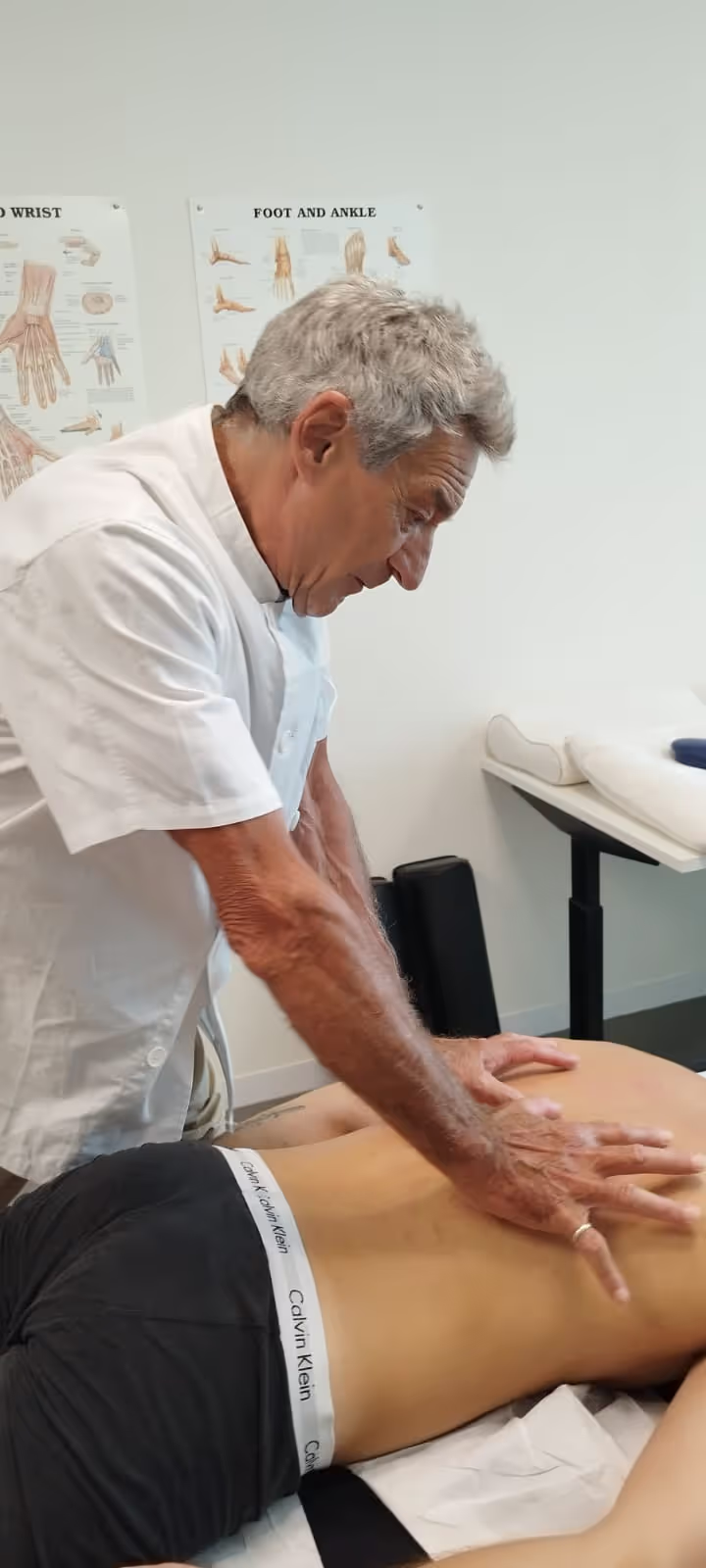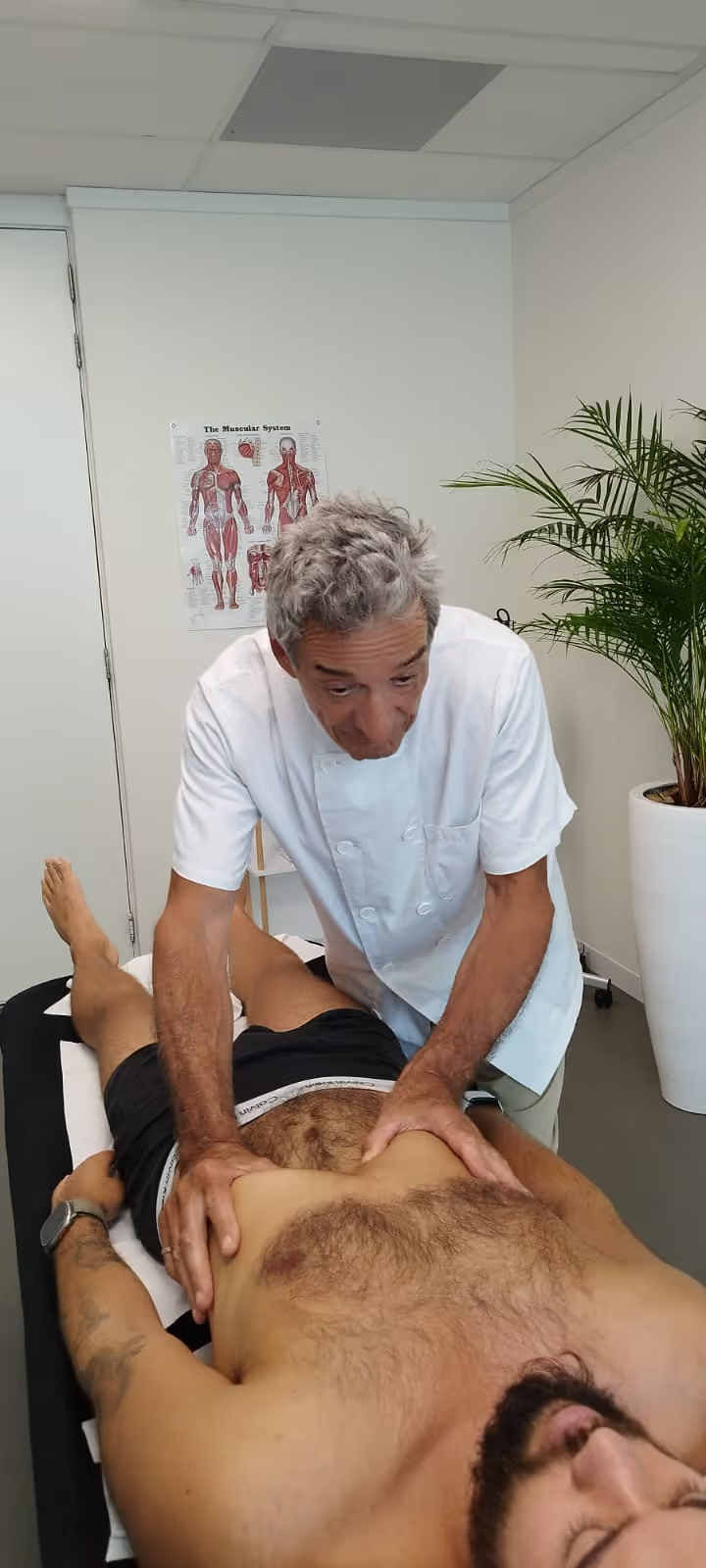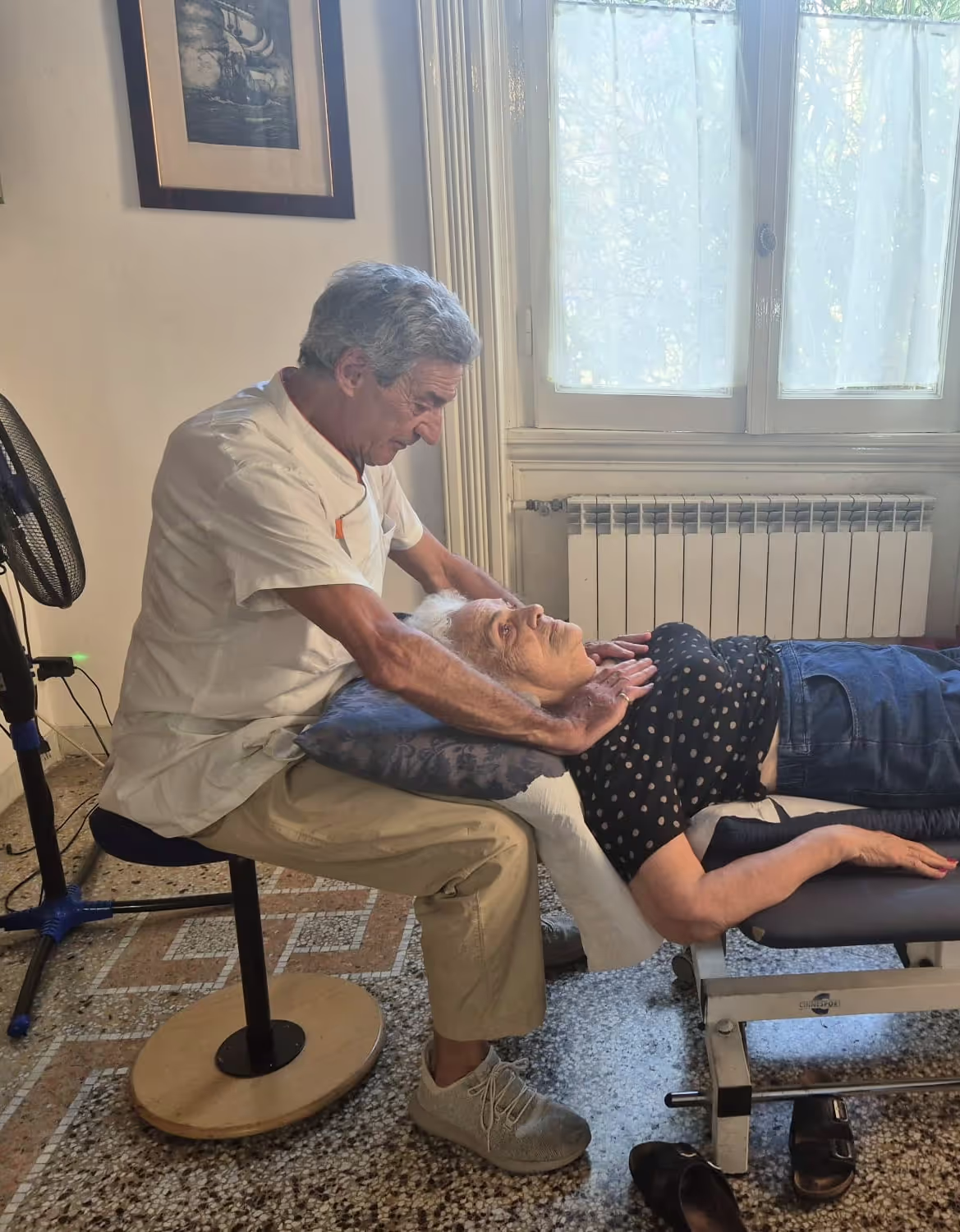Osteopathy for Adults
The role of osteopathy in adults
Osteopathy for adults helps to stimulate the body’s natural resources, aiming to restore balance and optimal function. Even though the anatomical structure is similar for everyone, each person is unique due to their lived experiences and external influences—such as trauma or lifestyle habits—that affect their posture and physical well-being.Every individual carries a history that can influence their health: trauma, poor posture, and other lifestyle-related factors can create tensions, stiffness, and disorders that compromise the body’s balance. It is in these situations that osteopathy finds its role, using manual treatments to restore health and improve body functionality.Modern lifestyle is often the main cause of physical discomfort in adults. When we lose the ability to adapt to changes, dysfunctions arise. The osteopath’s task is to restore this compensatory ability through manipulative techniques that stimulate the physiological mobility of the main body systems, such as the musculoskeletal, nervous, circulatory, respiratory, and fascial systems. These interventions can lead to significant improvements in health, reducing tensions and preventing or treating various disorders.

Osteopathic treatment for adults: how does it work?
Osteopathy focuses on the overall well-being of the body and develops a personalized therapeutic path for each patient. To begin, the osteopath performs a thorough assessment of overall health, followed by a physical and postural analysis. Thanks to an examination and manual assessment, the osteopath is able to identify the origins of pain and intervene with specific manual techniques that involve joints, tissues and organs. The main goal of this approach is to restore joint mobility and promote overall well-being, using minimally invasive techniques. The frequency and duration of sessions are adapted based on the patient's response, with the aim of obtaining the best therapeutic results.

Osteopathic treatment for adults: what are the benefits?
Adults derive many benefits from osteopathic treatments: they help address the minor ailments of aging, resolve issues related to infections and chronic diseases, improve mood, and strengthen the health of joints and bones. Through manual techniques, osteopathy restores mobility, functionality, and balance at the musculoskeletal-articular, fascial, visceral, craniosacral, emotional, and energetic levels, thereby promoting the body's healing abilities. Additionally, osteopathic treatments in adulthood support emotional and mental well-being. Once physical disorders are resolved, the mind can positively benefit. It is important, even if you have no pain, to always schedule an osteopathic session for purely preventive purposes.
When to undergo osteopathic treatment for adults
Some of the main disorders that can benefit from osteopathic treatment in adults include:
- Musculoskeletal system: joint pain, muscle pain, neck pain, dorsal pain, lower back pain, rib or intercostal pain, pain following trauma (sports injury, car accident).
- Neurological system: sciatica, cruralgia, cervicobrachialgia, facial neuralgia.
- Autonomic nervous system: anxiety states, depression, irritability, sleep disorders.
- Circulatory/lymphatic system: circulatory problems in the lower and upper limbs, venous congestion, hemorrhoids, some arterial hypertension, tachycardia.
- Digestive system: gastric acidity, hiatal hernia, digestive disorders, hepato-biliary disorders, diarrhea, spastic colitis.
- Odonto-stomatognathic system: pain in the temporomandibular joint, mandibular clicks, dental malocclusion, bruxism/teeth grinding, swallowing problems.

Book an appointment.
Reach out through your preferred channel to book a session or simply to ask for more information.